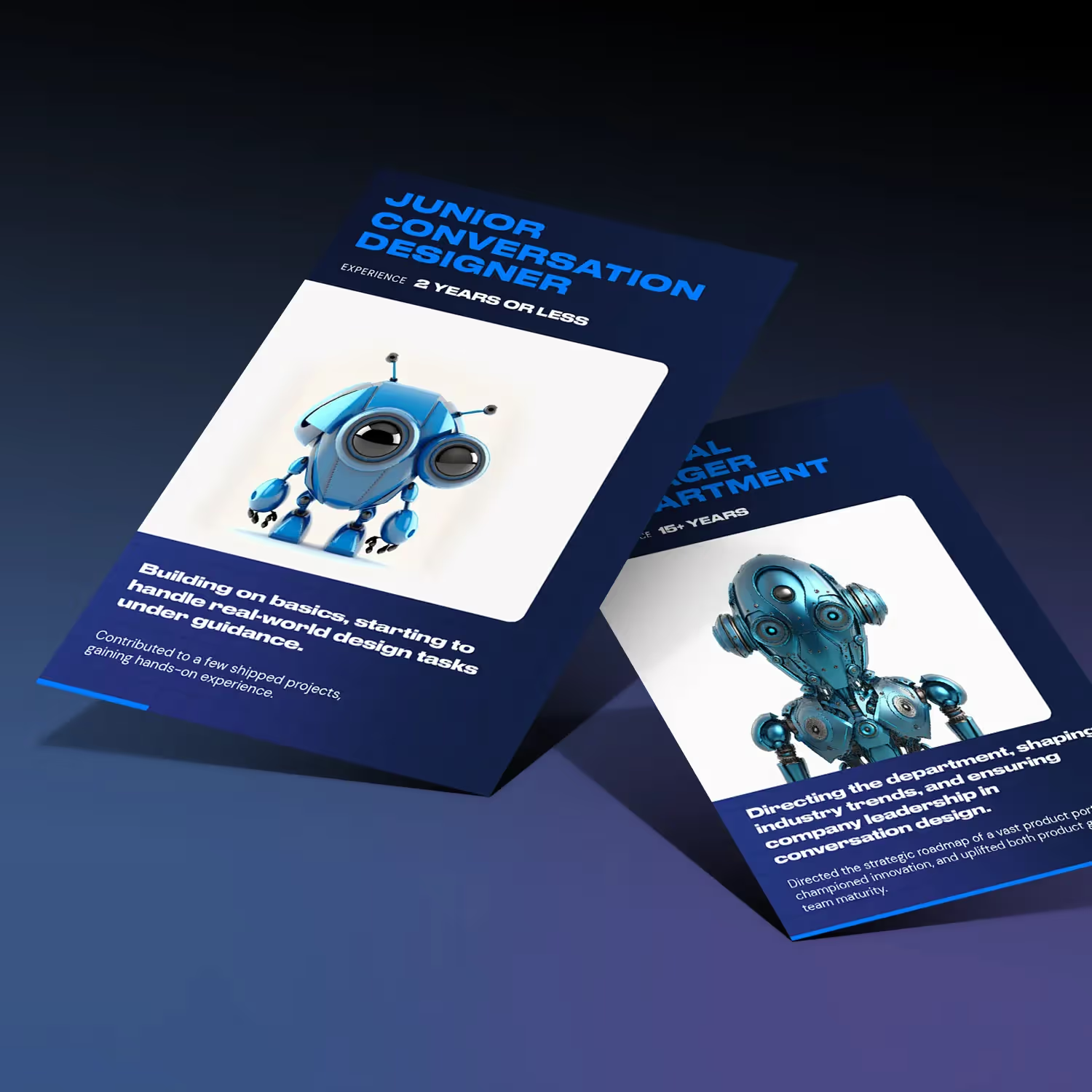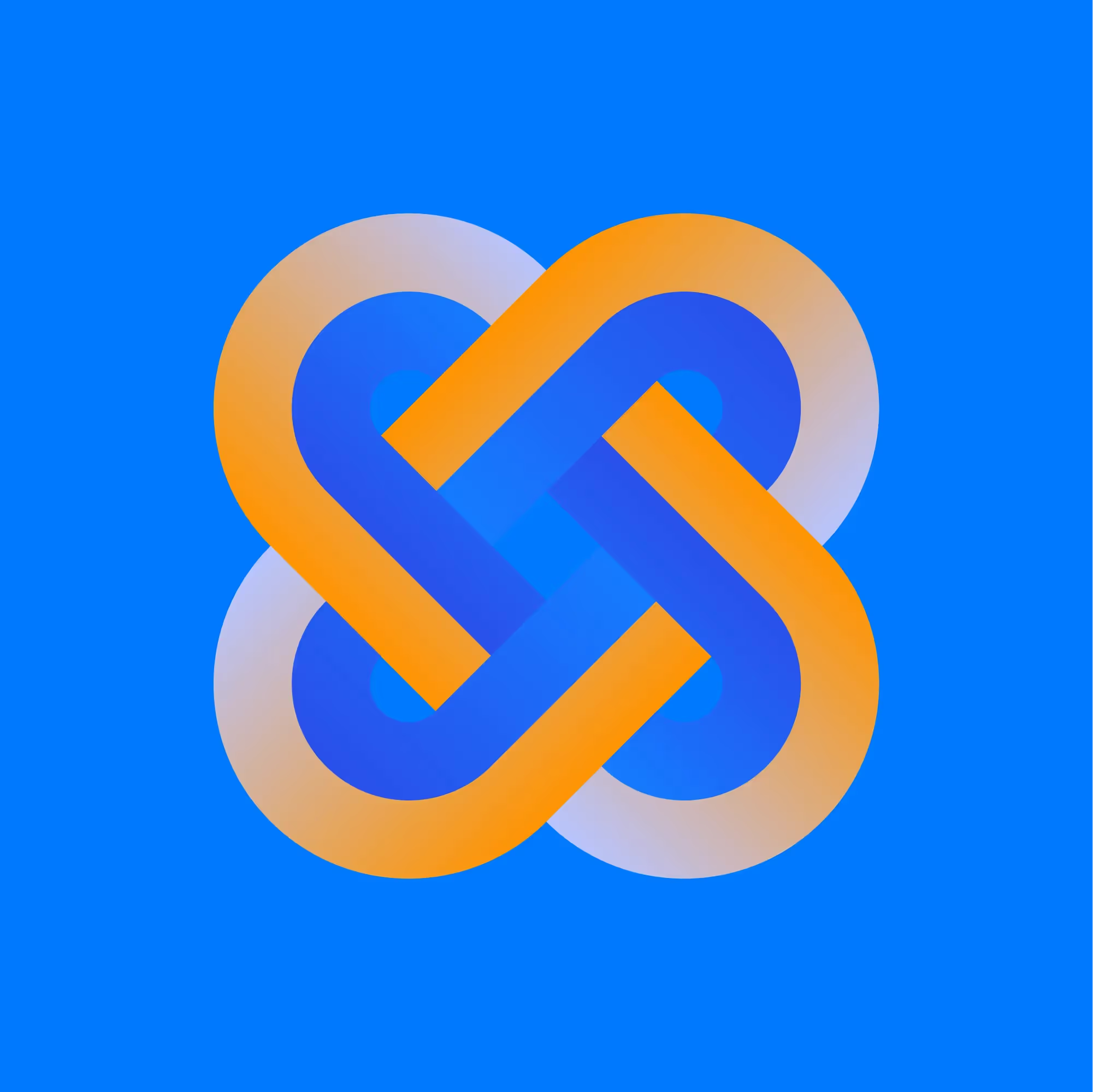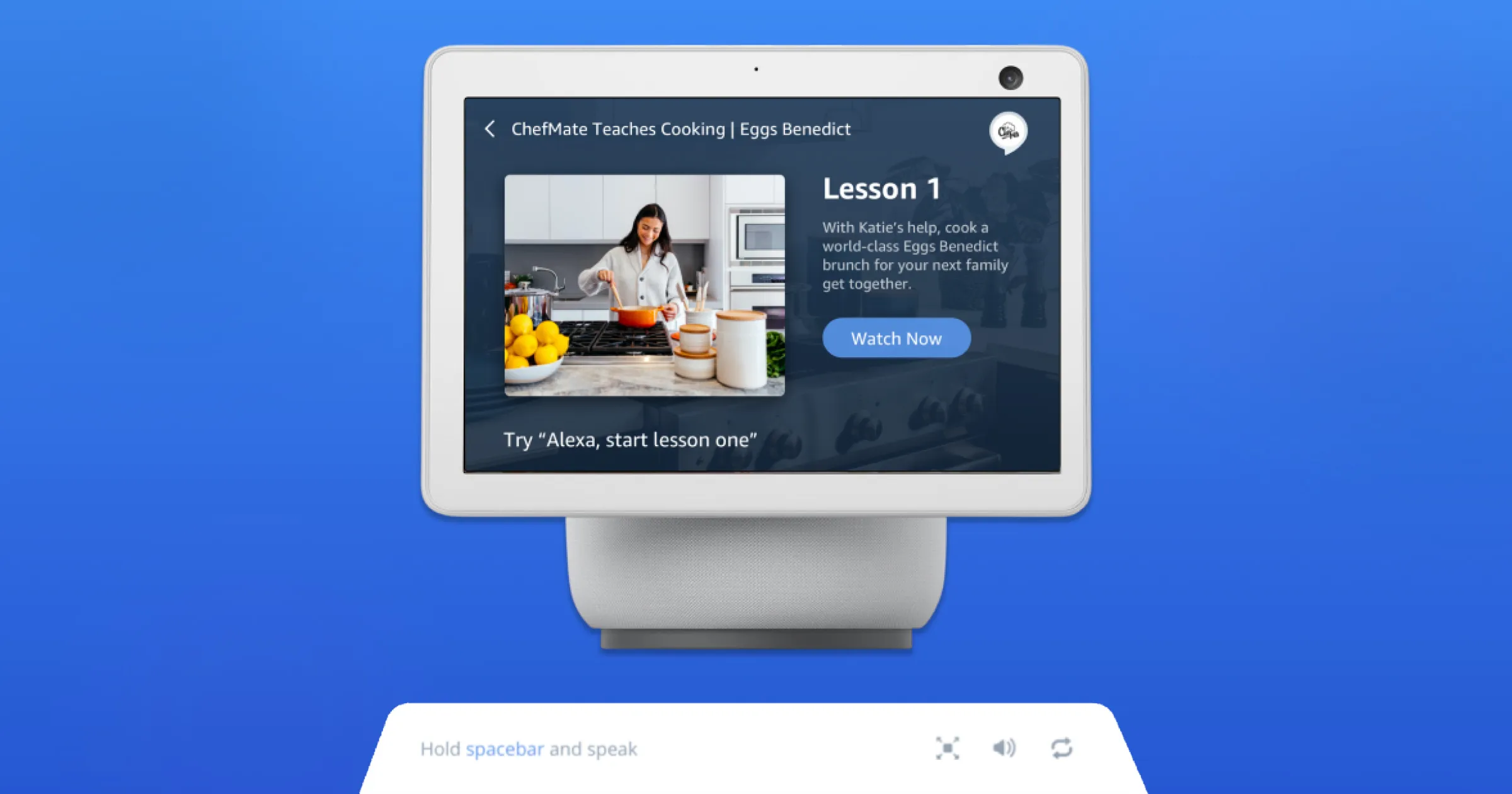Who is a full-stack conversation designer?
Full-stack designers should have a blended set of technical and creative skills that allow them to craft engaging, emotive experiences. I define a full-stack conversation designer as someone who understands and can perform the three key facets of conversation design: namely natural language understanding (NLU) design, dialogue design, and response design.
A full-stack conversation designer is someone who has skills in NLU design, dialogue design, and response design.
While a full-stack conversation designer might have one main area of focus, they should be well-versed enough in the others to understand how the different parts all work together. You can think about it like majors and minors in university (college for my North American friends): Even though you have one primary area of specialization, you also have other subspecialties.
Here are the skills across each domain that a full-stack conversation designer should ideally aim to master.
1. Natural language understanding (NLU)
NLU design involves discovering, designing, and maintaining the natural language understanding models for a chat or voice agent, including the process of intent discovery, utterance generation, conflict mapping, model testing, and handoff to dialogue design or development.
Key skills: Understand how to put together an NLU model and build it from the ground up by taking utterances, clustering them into similar topics, and building out an intent model with a high degree of accuracy. Be able to update intents and perform disambiguation within the model. Understand when and how to use entities. Be able to explain the intricacies of the model and give context to dialogue designers so they can map out their conversation flows.
2. Dialogue design
Dialogue design involves determining the conversation logic and creating the script for a chat or voice agent, including defining primary intents and happy path flows, with error pathing.
Key skills: Draw from UX and use design thinking to solve a customer’s problem. Recognize that a conversation isn’t always the best way to get to a solution, but just one of a number of tools. Understand user behavior and the best way to solve a customer’s problem.
3. Response design
Response design is concerned with the creation and management of the response content and persona of the agent, including tone of voice and style guide.
Key skills: Craft engaging responses using the principles of good copywriting. Understand the intricacies of conversation and how to get a customer to respond how you want them to. Write no-match and no-reply fallbacks in such a way that it elicits the correct response.
How it all comes together
Say you’re designing a conversation experience to guide a customer through the process of applying for a new credit card. In addition to collecting some basic information about the person, you’ll need to ascertain exactly which card they’re interested in.
Someone who is only skilled in response design might think of this as a very linear process—customers have to follow a particular order of questions to figure out what kind of credit card they want. But what if your customer tells you in the first message, “I’m looking to sign up for a Voiceflow platinum card”? If you’re also skilled in dialogue and NLU design, you’ll be able to set up entities that will skip them through that part of the journey and get customers to a result faster, without having to repeat information they’ve already provided. That’s the power of having a breadth of skills.
Ultimately, it enables you to be able to look at smaller pieces of data, say an utterance, and then extrapolate them across an entire conversation. It’s thinking: If a user responded with X, then I’ve got to update my response to elicit the right response. Or the user said Y, I can use that to skip them through clarifying steps.
What advantage does a full-stack designer have over a multidisciplinary team?
Still, you might be thinking, that all sounds great, but why does it have to be in one person? Why can’t a team of people, with different specialties, all achieve that same outcome?
It’s a great question—and if your team is big enough to separate these functions into different individual disciplines, that’s amazing. But the reality is that many (or dare I say, most) CxD teams aren’t yet operating at that scale. Maybe one day, but not today.
Even if you did have a team big enough to divide these disciplines, it’s still critical for everyone on that team to understand the other functions. In fact, I’d argue that it’s even more important as you work on bigger and more complicated projects. If you can’t see the big picture, it makes it so much harder to do effective conversation design because you don’t have all the context you need to solve a customer problem.
Full-stack conversation designers are indispensable
A lot of people who become CxDs (myself included) come from content writing, customer support, copywriting, or linguistic backgrounds. These are all transferable skills, but they’re only one piece of the puzzle. The other critical components include how to construct NLU models, and your ability to use design thinking to solve problems. Ultimately the question is: How can we solve the customer’s problem with the least amount of mental load on their part?
And while it might be unrealistic to be a master at all of these skills, you need to have a well-rounded understanding of all of these disciplines to become the most effective collaborator and teammate you can be. The more holistic view you have of the conversation design process, the better a designer you’ll be.
So how do you get there? Check out our CxD Career Progression Guide to see the key skills CxDs need to be successful at each level of seniority. Use it to identify skill gaps and growth areas so you can focus on developing the highest-impact skills to progress your career. And, if you’re really keen to start learning today, I would recommend this course to anyone interested in improving their skills in NLU design—which I see as a key gap for many CxDs who come from more creative backgrounds.
Who is a full-stack conversation designer?
Full-stack designers should have a blended set of technical and creative skills that allow them to craft engaging, emotive experiences. I define a full-stack conversation designer as someone who understands and can perform the three key facets of conversation design: namely natural language understanding (NLU) design, dialogue design, and response design.
A full-stack conversation designer is someone who has skills in NLU design, dialogue design, and response design.
While a full-stack conversation designer might have one main area of focus, they should be well-versed enough in the others to understand how the different parts all work together. You can think about it like majors and minors in university (college for my North American friends): Even though you have one primary area of specialization, you also have other subspecialties.
Here are the skills across each domain that a full-stack conversation designer should ideally aim to master.
1. Natural language understanding (NLU)
NLU design involves discovering, designing, and maintaining the natural language understanding models for a chat or voice agent, including the process of intent discovery, utterance generation, conflict mapping, model testing, and handoff to dialogue design or development.
Key skills: Understand how to put together an NLU model and build it from the ground up by taking utterances, clustering them into similar topics, and building out an intent model with a high degree of accuracy. Be able to update intents and perform disambiguation within the model. Understand when and how to use entities. Be able to explain the intricacies of the model and give context to dialogue designers so they can map out their conversation flows.
2. Dialogue design
Dialogue design involves determining the conversation logic and creating the script for a chat or voice agent, including defining primary intents and happy path flows, with error pathing.
Key skills: Draw from UX and use design thinking to solve a customer’s problem. Recognize that a conversation isn’t always the best way to get to a solution, but just one of a number of tools. Understand user behavior and the best way to solve a customer’s problem.
3. Response design
Response design is concerned with the creation and management of the response content and persona of the agent, including tone of voice and style guide.
Key skills: Craft engaging responses using the principles of good copywriting. Understand the intricacies of conversation and how to get a customer to respond how you want them to. Write no-match and no-reply fallbacks in such a way that it elicits the correct response.
How it all comes together
Say you’re designing a conversation experience to guide a customer through the process of applying for a new credit card. In addition to collecting some basic information about the person, you’ll need to ascertain exactly which card they’re interested in.
Someone who is only skilled in response design might think of this as a very linear process—customers have to follow a particular order of questions to figure out what kind of credit card they want. But what if your customer tells you in the first message, “I’m looking to sign up for a Voiceflow platinum card”? If you’re also skilled in dialogue and NLU design, you’ll be able to set up entities that will skip them through that part of the journey and get customers to a result faster, without having to repeat information they’ve already provided. That’s the power of having a breadth of skills.
Ultimately, it enables you to be able to look at smaller pieces of data, say an utterance, and then extrapolate them across an entire conversation. It’s thinking: If a user responded with X, then I’ve got to update my response to elicit the right response. Or the user said Y, I can use that to skip them through clarifying steps.
What advantage does a full-stack designer have over a multidisciplinary team?
Still, you might be thinking, that all sounds great, but why does it have to be in one person? Why can’t a team of people, with different specialties, all achieve that same outcome?
It’s a great question—and if your team is big enough to separate these functions into different individual disciplines, that’s amazing. But the reality is that many (or dare I say, most) CxD teams aren’t yet operating at that scale. Maybe one day, but not today.
Even if you did have a team big enough to divide these disciplines, it’s still critical for everyone on that team to understand the other functions. In fact, I’d argue that it’s even more important as you work on bigger and more complicated projects. If you can’t see the big picture, it makes it so much harder to do effective conversation design because you don’t have all the context you need to solve a customer problem.
Full-stack conversation designers are indispensable
A lot of people who become CxDs (myself included) come from content writing, customer support, copywriting, or linguistic backgrounds. These are all transferable skills, but they’re only one piece of the puzzle. The other critical components include how to construct NLU models, and your ability to use design thinking to solve problems. Ultimately the question is: How can we solve the customer’s problem with the least amount of mental load on their part?
And while it might be unrealistic to be a master at all of these skills, you need to have a well-rounded understanding of all of these disciplines to become the most effective collaborator and teammate you can be. The more holistic view you have of the conversation design process, the better a designer you’ll be.
So how do you get there? Check out our CxD Career Progression Guide to see the key skills CxDs need to be successful at each level of seniority. Use it to identify skill gaps and growth areas so you can focus on developing the highest-impact skills to progress your career. And, if you’re really keen to start learning today, I would recommend this course to anyone interested in improving their skills in NLU design—which I see as a key gap for many CxDs who come from more creative backgrounds.







.svg)